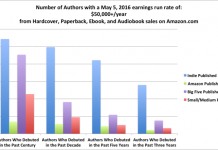
That’s the title of an article in Infoworld by Galen Gruman. Here’s an excerpt:
The age of the mobile reader is upon us, thanks to iPads, Kindles, and smartphones. So why is it so hard to create mobile content? There’s a shocking lack of tools to craft books, monographs, magazine articles, white papers, and other content for use on mobile devices for the ePub format deployed in e-book reader apps such as Apple’s iBooks and Amazon.com’s Kindle, much less for the kind of scalable presentation seen in the few good magazine and newspaper apps like those for the Economist, the New York Times, and the San Francisco Chronicle.
…
Yet the creation tools that are available for both business users and publishers to create such mobile-savvy documents are simply terrible.
The two publishing tools you’d think would be ePub-savvy — Adobe InDesign and QuarkXPress — are decidedly not, despite coming out with new versions this year. InDesign CS5.5’s export creates messy code based on wild guesses as to content relationships, it ignores local formatting such as boldface and italics, and it doesn’t embed the font information needed to display special symbols. QuarkXPress 9 has the same flaws as InDesign, plus more: It limits the mapping of text styles to just a handful of CSS equivalents and doesn’t let you control output resolution of your document’s images.
Much more in the article, including a discussion iBooks, Mobi, Quark and more.


































The situation isn’t as dire as Gruman makes it out to be; proper HTML processed through Sigil is a perfectly effective (and not hard to use) ePub creator.
I think his complaint stems from the fact that ePub and Mobi don’t copy newspaper and magazine layout well… and they should not, as they are a format of themselves. Those who understand that ePub and Mobi layouts are unique can work with them and create digital content without much complaining.
Steven I agree wholly with you. There are a number of wysiwyg and raw html editors out there that produce excellent results. But as you say they are trying to mix two very different formats, use shortcuts and exert excessive control over layout.
The current flux of the EPUB standard is also a factor to consider. Waiting for that to settle down seems reasonable. Then there’s Apple pushing the envelope with fixed layout, read-aloud and who knows what next. Perhaps EPUB will be an eternally moving target from now on.